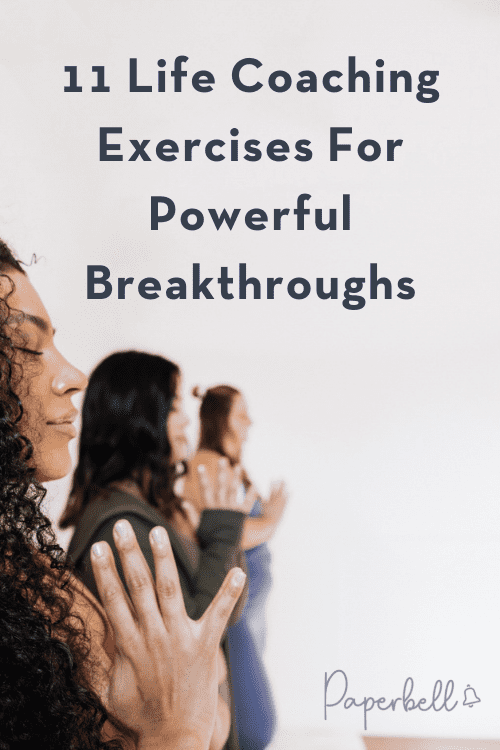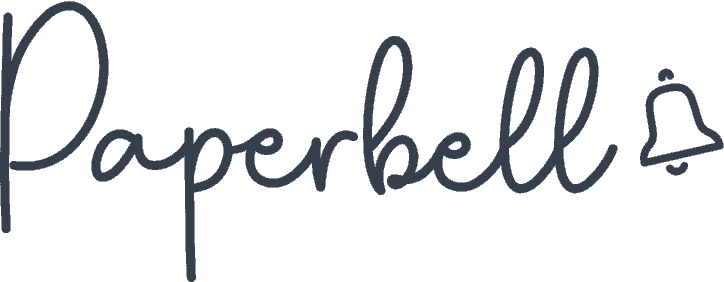Using life coaching exercises is a great way to help your clients assess their current life situation and get to know themselves at a deeper level. These exercises provide more context for the challenges and dreams of your clients, so that they can step out of their usual frame of thinking and gain a new perspective.
Exercises and frameworks are the very backbone of coaching. The more of these tools you have in your inventory, the more effectively you can serve your clients. In fact, it’s often these exercises that stand out as the most memorable part of the session for many coaching clients.
However, they do require work and often a certain level of readiness from the coachee. In this round up, we’ve gathered some of the most transformative life coaching exercises we’ve seen over the years, and we explain how you can use them for maximum impact.
You might want to save this article for later and come back to it as needed.
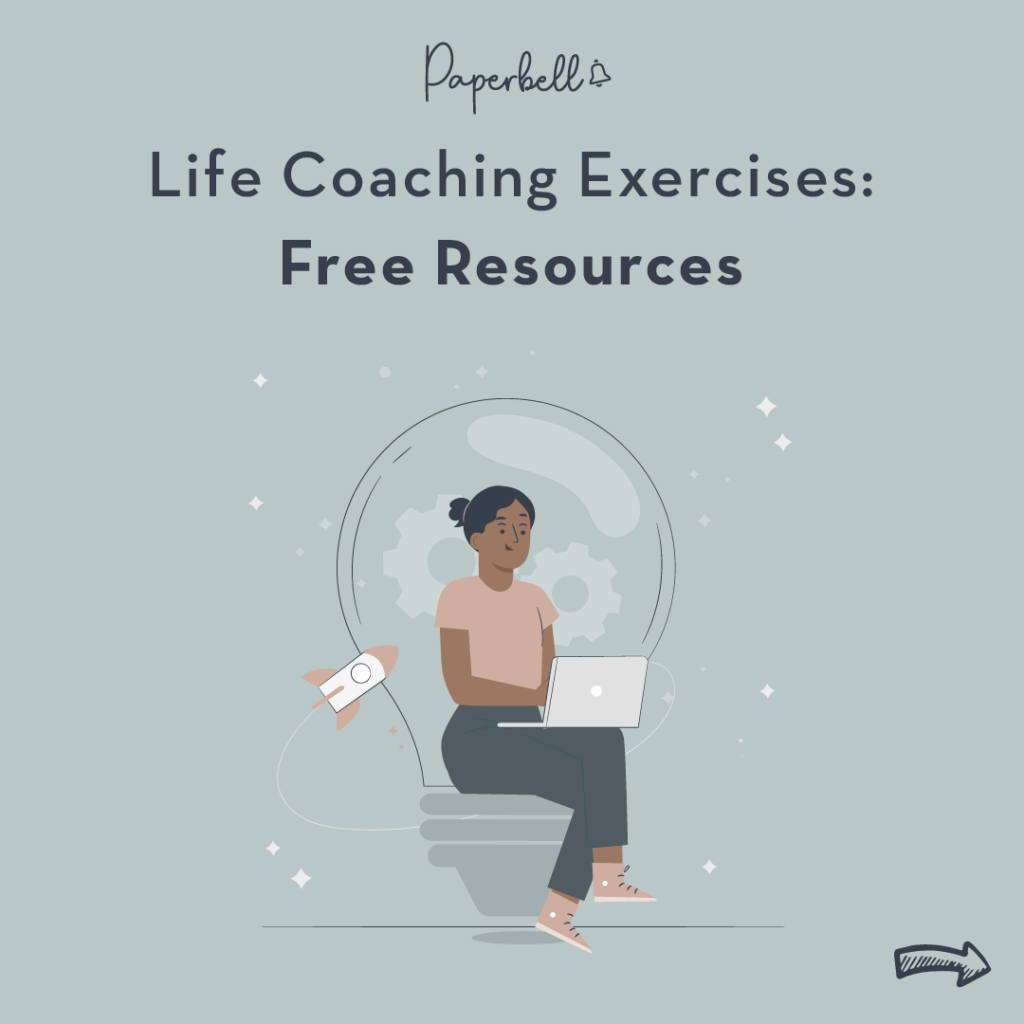
4 Types of Life Coaching Exercises
Coaching Exercises for Evaluation
Exercises that evaluate serve as a mirror for your client. It gives them a bird’s-eye view of their current situation as well as their strengths and weaknesses. Assessments and exercises that focus on the present are often the keys to finding what the real problem is (which, as we know, isn’t always what your client comes to you with). They have the power to draw a clear trajectory for your long-term work in a client relationship and get the coachee unstuck from their situation.
These exercises are a great foundation for any type of coaching that focuses on identity and self-image. Coaching assessments are normally completed in a test format by the coachee on their own and bring definitive answers (for example, being an extrovert or an introvert). On the other hand, coaching exercises that assess your clients are more open-ended and give more space for your client to give their own definitions to themselves and their situation.
[ Read: 9 Free Coaching Assessment Tools And Where To Find Them ]
Coaching Exercises for Reflection
These exercises normally focus on past events and their significance in your client’s life. They help process negative memories and transform their meanings. This does require a certain level of vulnerability from your client, especially if they’ve been through trauma or if they have a tendency to shut down when difficult topics arise.
Always make sure your client is ready for an exercise like this, and create a safe space for them in your session to be able to open up. If you sense that they aren’t yet in the right place to do such work, you can take a step back and use coaching questions instead, to gently begin to move away any barriers holding them back from healing.
[ Read: 53 Life Coaching Questions That Work With Every Client ]
Coaching Exercises for Goal Setting
These exercises focus on the desired future of your client: the dreams they envision, the intentions they set for change, and the goals they want to pursue. Though a coaching process isn’t a straight line, it’s best to use these exercises once you’re sure your client is ready to set their own goals and not the ones society or their environment expects of them. If they feel they need to push themselves to achieve these goals and their drive doesn’t come from internal motivation, you might want to lead them through more reflective exercises instead.
Coaching Exercises for Personal Growth
These exercises can help your clients change and improve themselves in the desired direction. This might mean building trust within a group, learning assertive communication skills, or managing conflict. They can be used in both 1-on-1 sessions and group settings and are an excellent way to put new insights into practice. Relationship coaching sessions can especially benefit from this type of exercise.
Life Coaching Exercises to Use During Sessions
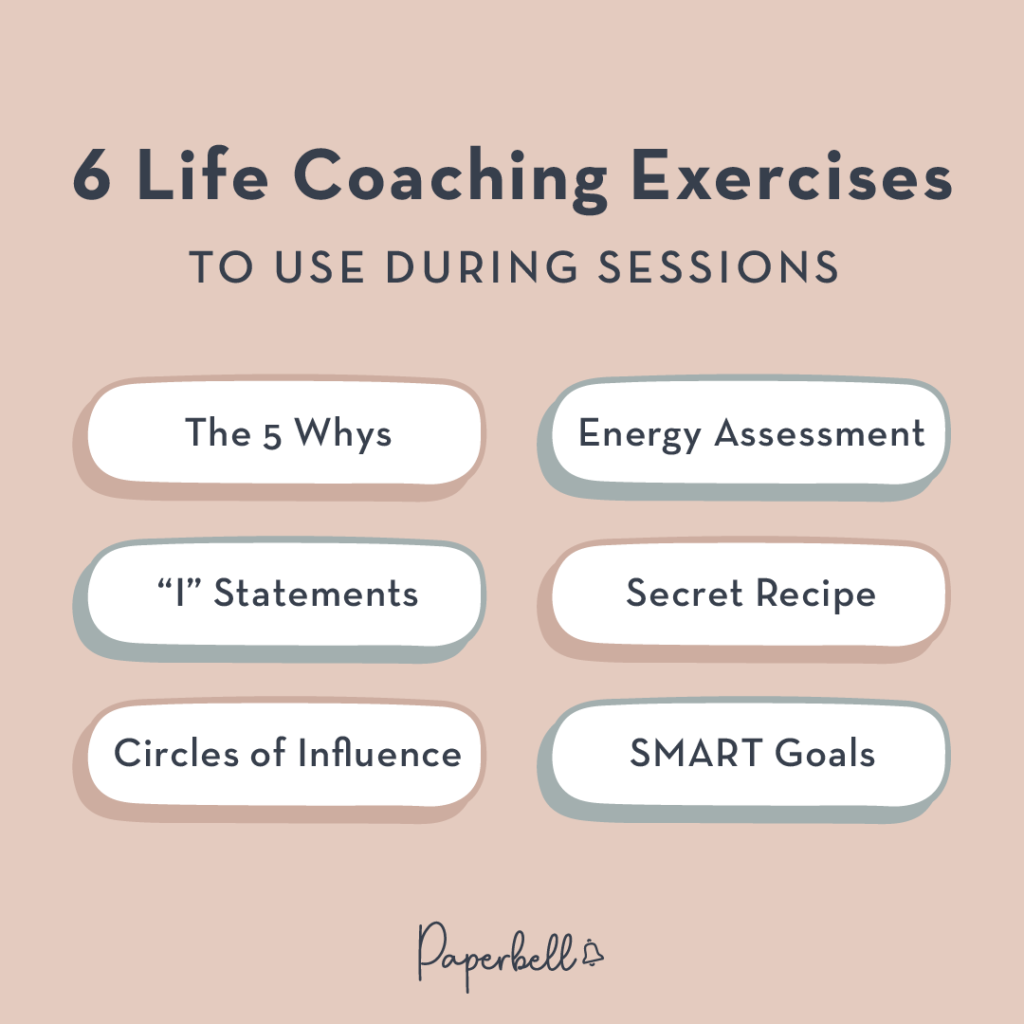
The 5 Whys
This is a popular problem-solving method that was developed by Sakichi Toyoda in the 1930s and got particularly popular in business settings. However, this simple exercise is also a great tool to see the bigger picture in any life situation and set goals that really matter.
When your coachee makes a statement about what they want or what they struggle with, ask them why. Then ask why four more times as a follow-up question and make sure you reflect the same statement back to your coachee that they have used. For example, if your client says they want to become wealthy, a series of whys might uncover that what they really want is to be loved and accepted — which will completely change the trajectory of your future work with them.
Energy Assessment
This exercise gives a complete picture of what works and what doesn’t work in your client’s life. Ask them to make a list of things that drain them of energy and the ones that give them energy. This can be people, places, activities, belongings, and everything in between.
Help them make their list as specific as possible. For example, it’s probably not their spouse that drains them but a particular thing they do (and the meaning your client attaches to it). Once the list is complete, you can help your client make decisions about what they want to eliminate, change, and do more or less of moving forward.
“I” Statements
“I” statements can be used to help your client communicate their feelings more effectively in a conflict situation. When something bothers us that our loved ones do, we often blame them for our feelings saying “you make me X” or “I don’t like when you Y” and so on. “I” statements help turn this around. They go like this:
When you [do X], I feel [emotion]. It would work better for me if you could [do Y]. Would you be willing to do that for me?
Notice how a “you” statement would immediately make the other person defend themselves instead of discussing the problem openly. You can help your client practice “I” statements in a situation they are facing with you as a role play, so that they will be more equipped to have the actual conversation later on.
Secret Recipe
There’s a time in a client’s life when they ask themselves: How did I get here? Their life seems to be on autopilot, or it simply took a different direction than what they expected. In this situation, it’s helpful to give their own question back to them, and ask them to describe the recipe that got them there.
This helps them take responsibility for their situation and assess the series of decisions that led them where they are today. This exercise also proves that if they could create their current reality, they can also create a different one as a result of a different set of decisions.
Circles of Influence
The hardest situations to cope with for a client are the ones they feel they can’t control. When they’re hitting a wall, you can use this exercise to help them assess what they can control, what they can’t control but can influence, and what they can’t influence at all.
You can visualize it for them as three concentric circles and help them assess each statement that goes within them. It’s particularly helpful with relationship coaching and in situations of loss.
SMART Goals
The SMART model is a way to assess whether your client’s goals are Specific, Measurable, Achievable, Relevant, and Time-Bound. This exercise helps make their goal-setting process extremely clear and specific.
In addition to setting SMART goals, help your client break them down into digestible objectives, and make sure they aren’t overcommitting. Discuss how they would organize their goals into a system of yearly, monthly, and weekly objectives, track their progress, and celebrate their wins.
Life Coaching Exercises Your Client Can Do On Their Own
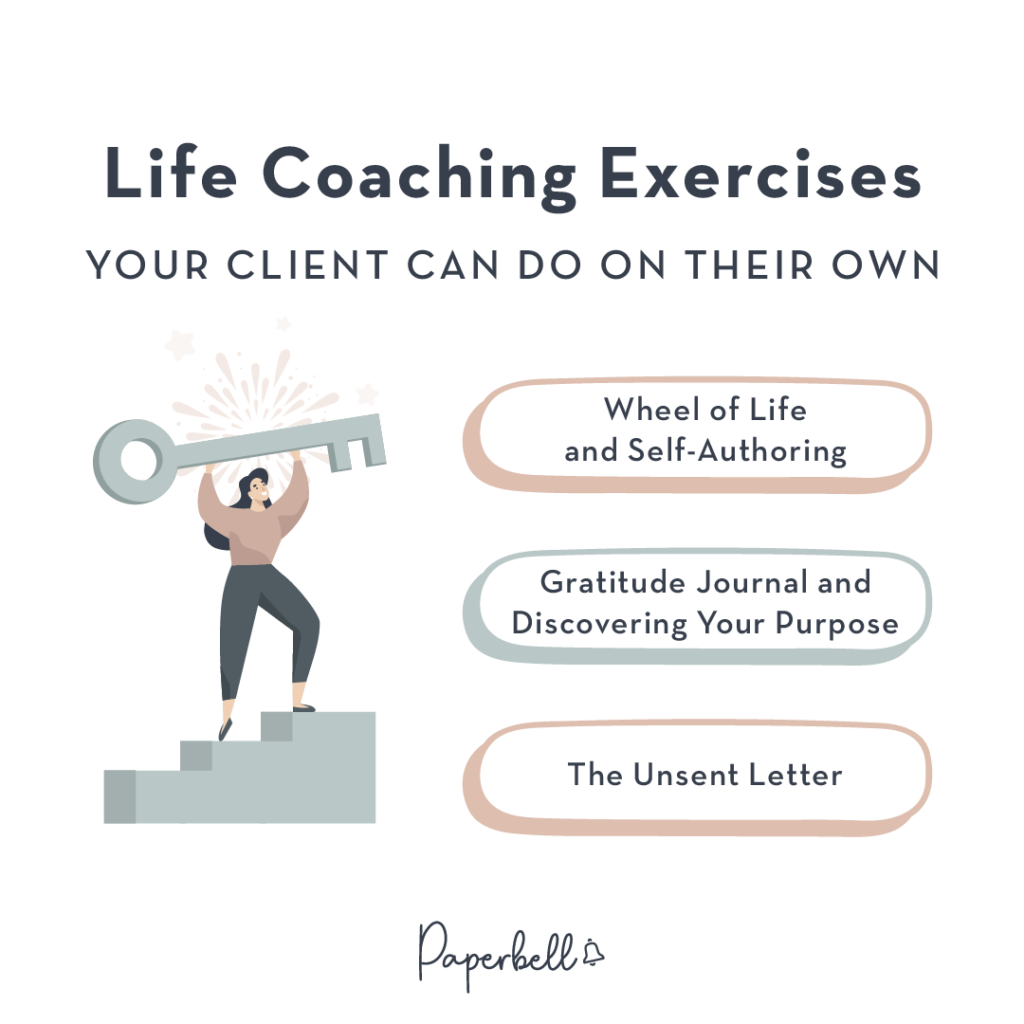
Wheel of Life
The life wheel, or wheel of life, is a classic coaching exercise that helps people evaluate how content they are with the different aspects of their lives. They can simply rate each area from one to ten or list down what’s working and what isn’t, then bring it as material for the next session with you.
The most common areas to address are career, family, social life and their romantic relationships, health, finances, and spiritual life. A more comprehensive and immersive version of this exercise is the Lifebook Program where your client can go much deeper into 12 categories of their life and create a vision for each.
Self-Authoring
The self-authoring platform is a self-coaching framework that helps your clients evaluate and process their past, analyze their present virtues, and create a vision for their future. It’s the most time-taking from the list, since each of these elements (past, present, and future authoring) can take several days to complete. It’s best to give it as an optional exercise and then discuss the client’s findings in your sessions.
Gratitude Journal
Writing a gratitude journal is known as the most effective practice to help increase feelings of happiness and contentment in your client’s emotional life. It can be really transformative for people who tend to be future-oriented to an extreme and find it hard to be anchored in the present moment.
Discovering Your Purpose
This simple exercise helps your client gain perspective on what might become their passion or purpose in life. Ask them to send this simple question to 5-10 people who know them well:
What is my unique ability that I do better than anyone else in the world?
Once they’ve gathered their answers, help them explore any commonalities in them and discuss how they relate to them. This exercise is helpful in finding a new career path or project that makes your client fulfilled and motivated to work towards.
The Unsent Letter
Clients in relationship coaching sessions often have a lot of unexpressed emotions that they don’t yet know how to manage. Instead of bursting out in front of their loved ones, ask them to write a radically honest letter to each of them without sending it. No filters, no holding back, just their raw and honest emotions.
In the next session, give them the freedom to either read from it or keep it to themselves and just share how the exercise impacted them. Usually, this shines some light on what actually makes them feel hurt and helps the heaviness get out of the way so they can have a more open conversation with their loved ones.
50+ Life Coaching Exercises: Additional Free Resources
If you want to further expand the inventory of your coaching tools, here are three excellent resources you can consider with 100+ life coaching exercises to choose from:
Evercoach’s List Of Coaching Tools
50 Life Coaching Exercises By David Bonham Carter
